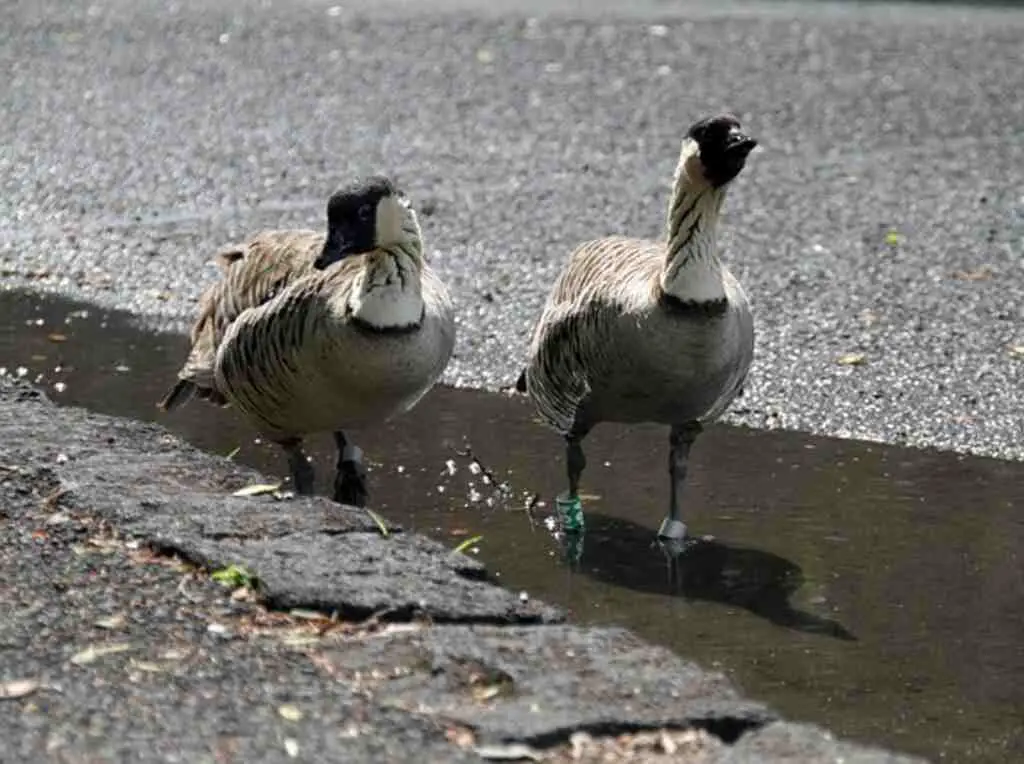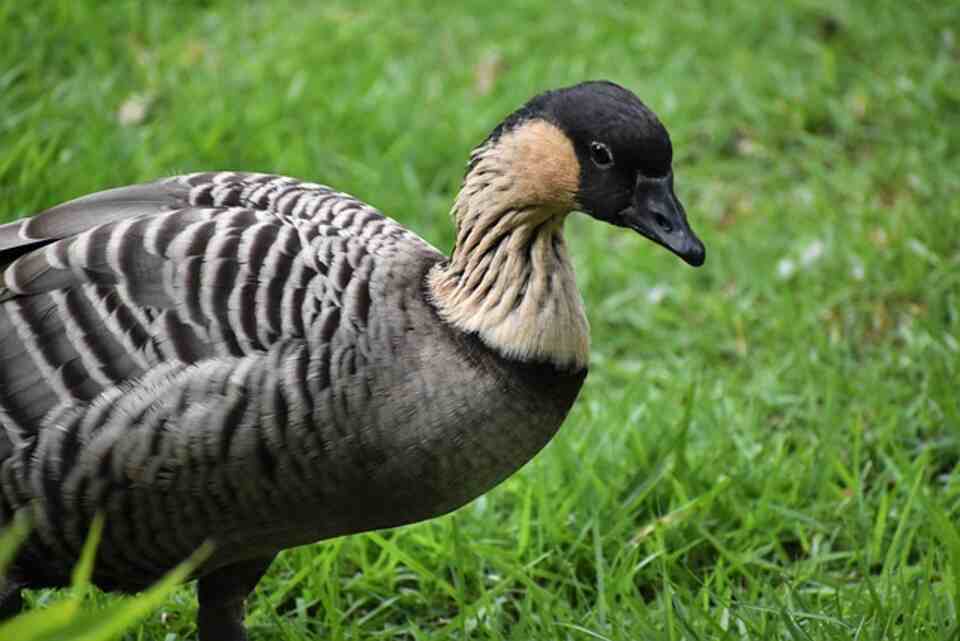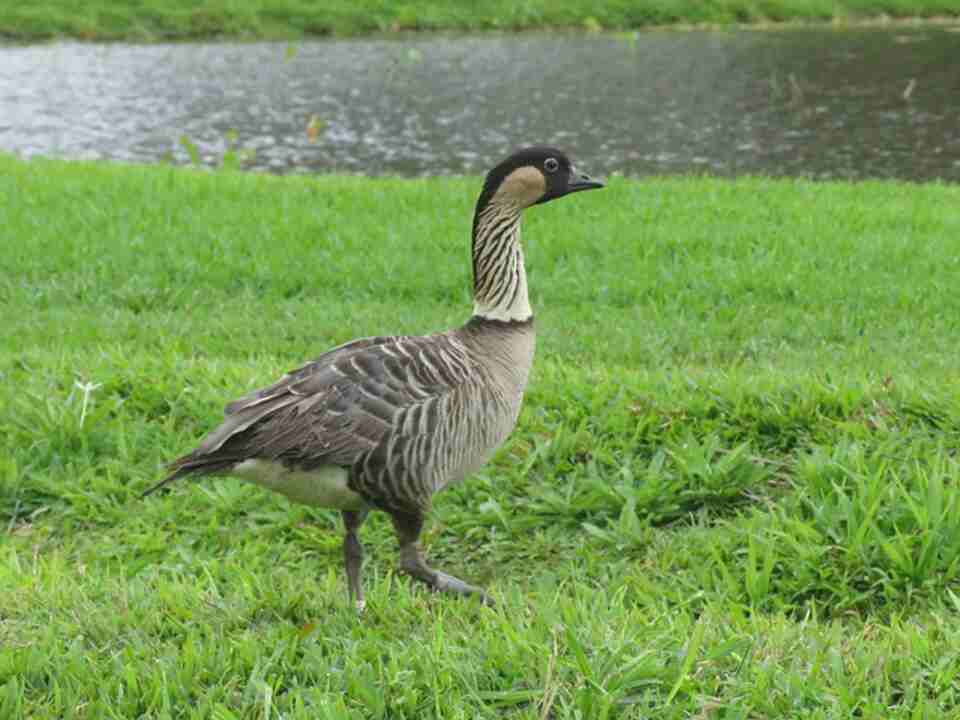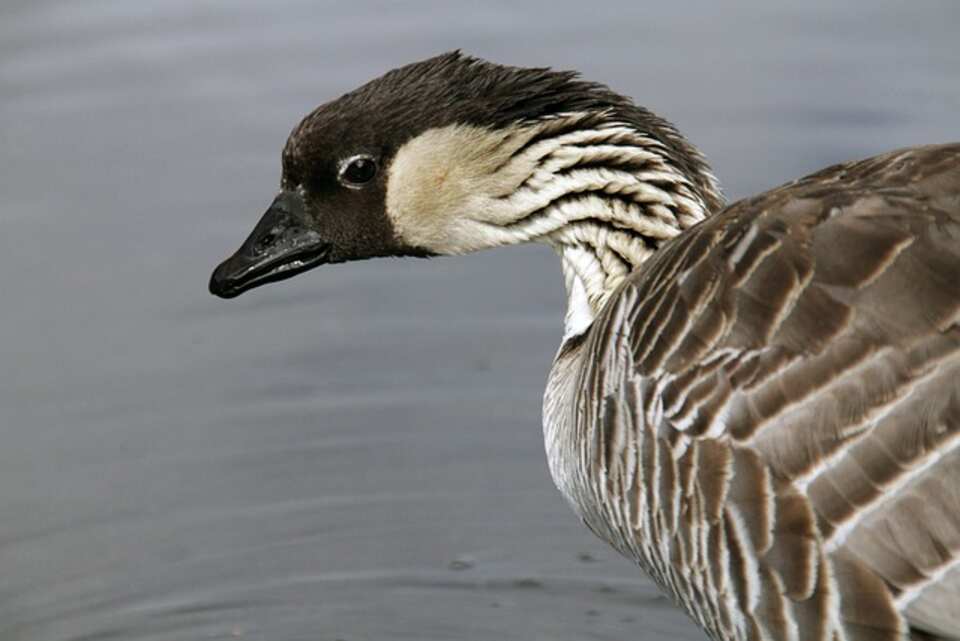The Nene, also known as the Hawaiian Goose, is a captivating and unique bird species that holds a special place in the hearts of Hawaii’s residents and visitors alike. As the official state bird of Hawaii, the Nene’s story is one of resilience, conservation, and the delicate balance of the islands’ fragile ecosystem.
Table of Contents
Unveiling Nēnē: The Story of Hawaii’s State Bird
The Hawaiian Goose, also known as the Nēnē, became the official state bird of Hawaii in 1957, two years before the territory was declared a state. This unique waterfowl species was chosen to highlight the importance of protecting Hawaii’s rare and endemic plants and animals.
The campaign to declare the Nēnē as the state bird was aimed at both lawmakers and the public. The goal was to raise awareness about the need to respect, admire, and protect Hawaii’s fragile and imperiled natural heritage. At the time, the Nēnē was one of the rarest and most endangered birds in the world, with a population of just 30 individuals remaining in the wild.
By selecting the Nēnē as the state bird, it was hoped that there would be more financial and public support for captive breeding programs and other conservation efforts required to save the species from extinction. The Nēnē was the perfect candidate because it is found exclusively in Hawaii, is one of the most unique species of geese, and is relatively easy to observe in its natural habitat.
The decision to designate the Nēnē as the state bird was a crucial step in raising awareness about the importance of preserving Hawaii’s endemic species and their habitats. It helped to secure federal funding and support for conservation efforts, ultimately leading to the successful recovery of the Nēnē population from the brink of extinction.
The Nene: Hawaii’s Unique and Endangered State Bird
The Nene’s Fascinating History
The Nene is believed to have descended from the Canada Goose, which arrived in the Hawaiian Islands thousands of years ago. Over time, these geese adapted to the island’s unique climate and terrain, developing distinct physical characteristics and behaviors that set them apart from their mainland counterparts. With their distinctive black heads, amber-colored cheeks, and slender necks, the Nene have become an icon of Hawaii’s natural heritage.
The Nene’s Ecological Significance
The Nene plays a vital role in the delicate balance of Hawaii’s fragile ecosystem. As plant grazers, they help to maintain the health and diversity of the islands’ native vegetation. Their presence also serves as an indicator of the overall environmental well-being, as the Nene’s survival is closely tied to the preservation of their natural habitats.
The Nene’s Endangered Status
Despite their significance, the Nene has faced numerous challenges over the years. Hunting, habitat loss, and the introduction of non-native predators have all contributed to the species’ decline. At one point, the Nene population dwindled to just 30 individuals, making it one of the rarest geese in the world.
Conservation Efforts and Successes
In response to the Nene’s endangered status, dedicated conservation efforts have been implemented to protect and restore the species. These efforts have included captive breeding programs, habitat restoration, and the reintroduction of Nene to their native environments. Thanks to these initiatives, the Nene population has steadily increased, with current estimates ranging between 2,500 and 3,800 individuals.
Encountering the Nene in Hawaii
Visitors to Hawaii have the unique opportunity to catch a glimpse of the Nene in its natural habitat. These majestic birds can be found in various national parks and wildlife refuges throughout the islands, offering a chance to observe their graceful movements and unique behaviors up close.
The Nene’s Cultural Significance
Beyond its ecological importance, the Nene holds deep cultural significance for the native Hawaiian people. The bird’s image has been featured in traditional art, storytelling, and symbolism, reflecting the deep reverence and connection the Hawaiian people have with their state bird.
The Nene’s Future and the Importance of Conservation
As the Nene continues its journey toward recovery, the need for ongoing conservation efforts remains paramount. By protecting the Nene’s habitat, reducing threats, and fostering public awareness, we can ensure that this iconic species continues to thrive and maintain its rightful place in Hawaii’s rich natural heritage.
Through the collective efforts of conservationists, researchers, and the public, the Nene’s future looks brighter, and the islands of Hawaii can continue to be graced by the presence of this remarkable and unique state bird.
Conservation Efforts to Protect the Nene
Safeguarding the Iconic Hawaiian Goose: Nene Conservation Initiatives
The nene, or Hawaiian goose, is an iconic and endangered species that holds a special place in the hearts of Hawaii’s residents and visitors alike. As the state bird of Hawaii, the nene’s survival is of paramount importance, and dedicated conservation efforts have been underway to ensure its continued existence.
Habitat Restoration and Protection
One of the key components of nene conservation is the restoration and protection of their natural habitats. The nene is native to the Hawaiian Islands and thrives in high-elevation areas with a mix of open grassland, shrubland, and native vegetation. Unfortunately, these habitats have been under threat from various factors, including development, invasive species, and habitat degradation.
To combat this, various conservation organizations and government agencies have worked tirelessly to establish and maintain protected areas for the nene. These sanctuaries provide a safe haven for the birds, allowing them to forage, nest, and thrive without the threat of human interference or predation by non-native species.
Captive Breeding and Reintroduction Programs
In addition to habitat protection, captive breeding and reintroduction programs have played a crucial role in the recovery of the nene population. In the 1950s, the nene population had dwindled to just 30 individuals, prompting the establishment of a captive breeding program at the Wildfowl and Wetlands Trust in the United Kingdom.
Through the dedicated efforts of conservationists, the captive breeding program has been successful in increasing the nene population. Birds bred in captivity have been reintroduced into the wild, bolstering the existing populations and helping to establish new colonies in suitable habitats across the Hawaiian Islands.
Predator Control and Disease Management
Another significant challenge facing nene conservation is the threat of predation and disease. Non-native predators, such as mongooses, cats, and rats, pose a significant threat to nene nests and chicks, while avian diseases can also have devastating impacts on wild populations.
To address these threats, wildlife management agencies have implemented comprehensive predator control and disease management programs. This includes the use of traps, fencing, and other deterrents to keep predators away from nene habitats, as well as the monitoring and treatment of disease outbreaks.
Community Engagement and Education
Successful nene conservation efforts also rely on the engagement and support of the local community. Conservation organizations have worked to raise awareness about the plight of the nene, educating the public about the importance of this iconic species and the need for its protection.
This community engagement has taken many forms, from school programs and public events to partnerships with local businesses and landowners. By fostering a sense of ownership and stewardship among Hawaii’s residents, these efforts have helped to build a strong foundation of support for nene conservation initiatives.
Ongoing Challenges and Future Outlook
Despite the impressive progress made in nene conservation, the species continues to face significant challenges. Habitat loss, climate change, and the ongoing threat of predation and disease remain persistent threats to the nene’s long-term survival.
However, the dedication and commitment of conservation organizations, government agencies, and the local community provide reason for optimism. With continued efforts to protect and restore nene habitats, maintain captive breeding and reintroduction programs, and engage the public, the future of the nene looks brighter than ever.
As the iconic symbol of Hawaii, the nene’s conservation is not only a matter of ecological importance, but also a testament to the resilience and determination of the Hawaiian people to safeguard their natural heritage for generations to come.
Conclusion
The Nene, Hawaii’s Unique and Endangered State Bird
As the official state bird of Hawaii, the Nene (Branta sandvicensis) holds a special place in the hearts of locals and visitors alike. This unique goose, found nowhere else in the world, has captured the imagination of many with its intriguing history, distinctive appearance, and the ongoing efforts to safeguard its future.
Conservation Efforts to Protect the Nene
Despite the Nene’s iconic status, the species has faced numerous challenges over the years, leading it to be categorized as an endangered species. Habitat loss, predation, and hunting have all contributed to the Nene’s decline, putting their survival at risk. However, thanks to the tireless efforts of conservation organizations, government agencies, and dedicated individuals, the Nene has been making a remarkable comeback in recent decades.
One of the key initiatives to protect the Nene has been the captive breeding and reintroduction program. In the 1950s, when the Nene population dwindled to just a few dozen individuals, a concerted effort was made to establish captive breeding colonies. These colonies have played a crucial role in bolstering the Nene’s numbers, allowing for the release of thousands of birds back into the wild.
The Nene’s recovery has been further supported by habitat restoration and protection efforts. Organizations like the Hawaii Department of Land and Natural Resources and the U.S. Fish and Wildlife Service have worked tirelessly to identify and safeguard the Nene’s fragile natural habitats, which are primarily found on the volcanic slopes of Maui and the Big Island. These efforts have involved the removal of invasive species, the reintroduction of native plants, and the establishment of protected areas where the Nene can thrive.
Alongside these conservation initiatives, educational outreach and public awareness campaigns have been instrumental in garnering support for the Nene’s protection. By sharing the Nene’s story and highlighting the importance of preserving this unique species, these efforts have inspired local communities and visitors alike to become stewards of the Nene’s legacy.
The Nene’s recovery is a testament to the power of collective action and the resilience of nature. While the species is still considered endangered, its population has steadily increased over the years, with the latest estimates suggesting a total of around 3,000 individuals in the wild. This gradual but steady progress is a testament to the dedication and hard work of those who have fought to ensure the Nene’s survival.
As we look to the future, the continued protection and conservation of the Nene will be of paramount importance. The challenges posed by climate change, invasive species, and human encroachment on their natural habitats will require ongoing vigilance and innovative solutions. But with the passion and commitment that has already been demonstrated, there is hope that the Nene will continue to thrive and serve as a symbol of Hawaii’s natural wonders for generations to come.
Through the collective efforts of researchers, conservationists, and the public, the Nene’s story has become a shining example of how a species on the brink of extinction can be brought back from the edge. As we celebrate the Nene’s resilience and the progress made in its recovery, we are reminded of the vital role that each of us can play in preserving the delicate balance of our natural world.
By embracing the Nene as a cherished part of Hawaii’s cultural and ecological heritage, we can ensure that this unique and captivating bird will continue to grace the islands for years to come.
References:
https://www.birdzilla.com/learn/hawaii-state-bird/
https://dlnr.hawaii.gov/dofaw/files/2020/05/A-Teachers-Guide-to-Nene.pdf





